Antique Chinese Bronze to be sold at Christie's New York, 21 & 22 september 2023
Lot 901. Property from a Prestigious Private Collection. A bronze ritual food vessel, gui, Early Western Zhou Dynasty, 11th-10th century BC; 28.4 cm across handles. Estimate USD 100,000 – USD 150,000. © Christie's Image Ltd 2023
An eight-character inscription on the interior reads shu xiang zuo fu gui bao zun yi (This precious sacrificial vessel was made by Shu Xiang for Father Gui).
Provenance : J. T. Tai & Co., New York, 1965.
Arthur M. Sackler (1913-1987) Collections, New York.
Acquired from the above in 2000.
Literature: Liu Tizhi, Xiaojiao jingge jinwen taben (Rubbings of Archaic Bronze Inscriptions at the Xiaojiaojingge Studio), 1935, vol. 5, p. 26, no. 5.
J.C. Ferguson, Lidai zhulu jijin mu (Bronze Inscriptions from Previous Publications), wine vessel, container, zun, Beijing, 1938, p. 104.
N. Barnard and Cheung Kwong-Yue, Rubbings and Hand Copies of Bronze Inscriptions in Chinese, Japanese, European, American, and Australasian Collections, Taipei, 1978, no. 543.
M. Hayashi, In Shu jidai seidoki no kenkyu (In Shu seidoki soran ichi) (Conspectus of Yin and Zhou Bronzes), Tokyo, 1984, vol. 2, pl. 88, gui no. 59.
R. Poor, Bronze Ritual Vessels of Ancient China (Slide Lectures), New York, 1968.
J. Rawson, Western Zhou Ritual Bronzes from the Arthur M. Sackler Collections, vol. IIB, Washington, D. C., 1990, pp. 350-51, no. 35.
Note: The cicadas, finely cast in bold intaglio line under the handles, is an unusual feature.
In her discussion of the current gui in Western Zhou Ritual Bronzes from the Arthur M. Sackler Collections, vol. IIB, Cambridge, 1990, pp. 350-51, no. 35, J. Rawson notes, “whereas the form and disposition of the motifs are Shang in origin, the smooth roundness of the relief is a Zhou characteristic.” Similar rounded relief can be seen on the gui illustrated ibid., pp. 352-53, no. 36, and on the De gui in the Winthrop Collection, Harvard University Art Museums, illustrated p. 354, fig. 36.1.
The result of Oxford thermoluminescence test no. 366L82 is consistent with the dating of this lot.
Lot 902. Property from the Collection of Leonard J. Star. A bronze ritual wine vessel, zhi, Early Western Zhou Dynasty, 11th-10th century BC; 18.5 cm high. Estimate USD 7,000 – USD 9,000. © Christie's Image Ltd 2023
The interior of the foot is cast in relief with a graph, ge.
Provenance : John Sparks Ltd., London (according to label).
Far East Gallery (Albert Y. P. Lee), Toronto, 1970s, by repute.
Leonard J. Star Collection, thence by descent to the present owner.
Note: Minao Hayashi, in In Shu Jidai Seidoki no Kenkyu (Conspectus of Yin and Zhou bronzes), vol. 1, Tokyo, 1984, pp. 347-8, illustrates several zhi with similar slender, elegant profiles, including nos. 114, 115 (Avery Brundage Collection, San Francisco), 117 (Museum Reitberg), 118-23, and pp. 350-51, nos. 146-49. Like the current zhi, no. 148, which has a plain, undecorated surface, is also cast in relief with the graph, ge. See, also, the Western Zhou zhi of similar form, but decorated with a narrow band of birds and cast inside the vessel with the character zi (son), from the Bella and P. P. Chi Collection, sold at Sotheby’s London, 7 June 2000, lot 9.
Lot 903. From the Heart: The Collection of Dr. Julius and Joan Jacobson. A bronze ritual tripod wine vessel, jue, Late shang dynasty, 12th-11th century BC; 19.7 cm high. Estimate USD 12,000 – USD 18,000. © Christie's Image Ltd 2023
A two-character inscription, ya X, is cast under the handle.
Provenance: T. Y. King & Sons Ltd., Hong Kong, 4 May 1984.
Lot 904. The Property of a Gentleman. A very rare and large bronze ritual wine vessel and cover, hu, Early Western Zhou Dynasty, 11th-10th century BC; 46.3 cm high. Estimate USD 70,000 – USD 100,000. © Christie's Image Ltd 2023
Provenance: Elegant House Chinese Curios, Hong Kong, 12 March 1991.
Note: A bronze hu and cover of this rare and distinctive form, but with a completely undecorated, plain surface and of smaller size (41.1. cm.), is illustrated by J. F. So and E. C. Bunker in Traders and Raiders on China's Northern Frontier, Arthur M. Sackler Gallery, Smithsonian Institution, Washington DC, 1995, p. 42, col. pl. 6, and p. 105, no. 19, where it is dated late 11th-early 10th century BC and attributed to north or northwest China. In her discussion of the vessel on p. 105, So notes that when the lid is inverted it can serve as a goblet on a low flared foot, and states, “When the two holes on the stem of the lid are aligned with the holes on the undecorated tubular handles at the base of the neck and the two holes on the flared foot ring, rope or leather strapping can pass through them and secure the container for travel.” So also notes that portable containers of this type are “forerunners of the variety of later vessels encased in imitation rope cages,” such as those illustrated ibid., pp. 106-7, nos. 20 and 21, and “reflect China’s increased traffic with non-Chinese patrons and its fascination with the exotic foreign ways of life of the northern tribes.” Another undecorated bronze hu and cover of this type, also of smaller size (38.2 cm.), is illustrated by J. Rawson in The Bella and P. P. Chiu Collection of Ancient Chinese Bronzes, Hong Kong, 1988, pp. 76-7, no. 27.
A comparable bronze hu and cover, but of smaller size (42.9 cm.) and decorated with an allover zigzag design of narrow leiwen bands, in the Hakutsuru Bijutsukan, Kobe, is illustrated by J. Rawson in Western Zhou Ritual Bronzes from the Arthur M. Sackler Collections, vol. IIB, Cambridge, 1990, p. 274, fig. 15.4, where it is dated early to middle Western Zhou. Also illustrated, p. 481, fig. 64.5, is a bronze you and cover dated first half of middle Western Zhou, of similar form and comparable large size (45 cm.), but with a swing handle with animal-head terminals, from the tomb of Feng Ji, Shaanxi Fufeng Liujiacun.
A line drawing of a hu of this type with a similar band of birds around the neck, but lacking a cover, is illustrated in the Xiqing gujian, a 40-volume illustrated catalogue of ancient bronzes commissioned by the Qianlong Emperor. Compiled between 1749 and 1755, it includes some 1,529 bronze objects from the imperial collection.
Lot 905. Property from a Prestigious Private Collection. A very rare small bronze ritual tripod food vessel, li, Mid-Western Zhou Dynasty, 10th-9th century BC; 15.9 cm wide across handles. Estimate USD 40,000 – USD 60,000. © Christie's Image Ltd 2023
Provenance: Mrs. Christian R. Holmes (1871-1941) collection, New York.
Sotheby Parke Bernet, 14-15 November 1961, lot 247.
J. T. Tai & Co., New York, 1965.
Arthur M. Sackler (1913-1987) Collections, New York.
Acquired from the above in 2000.
Literature: Umehara Sueji, O-Bei shucho Shina kodo seika (Selected Relics of Ancient Chinese Bronzes from Collections in Europe and America), Osaka, 1933, 2:96a.
Catalogue of the International Exhibition of Chinese Art 1935-6, London, 1935, no. 188.
Rong Geng, Shang Zhou yiqi tongkao (The Bronzes of Shang and Zhou), 1941, vol. 2, no. 170.
Chen Mengjia, Mei diguo zhuyi jielue de woguo Yin Zhou tongqi jilu (A Collection of Yin and Zhou Bronze Artifacts in America), Beiijing, 1962, A125.
Minao Hayashi, In Shu jidai seidoki no kenkyu (A Study of Shang and Zhou Bronzes), Tokyo, 1984, vol. 2, pl. 64, li no. 34.
J. Rawson, Western Zhou Ritual Bronzes In The Arthur M. Sackler Collections, vol. IIB, Washington, D. C., 1990, pp. 320-21, no. 27.
Exhibited: London, Royal Academy of Art, International Exhibition of Chinese Art, 1935-36.
On loan: Metropolitan Museum of Art, New York (L3254.6).
On loan and exhibited: Philadelphia Museum of Art, Philadelphia, 1941-1955.
Note: This unusual vessel represents a very rare type of li that takes inspiration in both form and decoration from contemporaneous ceramic li vessels, which were widely used in Shaanxi and Henan provinces. In her entry for the current vessel in Western Zhou Ritual Bronzes from the Arthur M. Sackler Collections, vol. IIB, Washington, D.C., 1990, pp.320-23, no. 27, J. Rawson illustrates, p. 322, fig. 27.3, a middle Western Zhou ceramic li in the British Museum, London, of similar shape and decoration from Shaanxi Chang’an Puducun. Rawson also illustrates several related bronze li inspired by ceramic prototypes, including one, fig. 27.2 (left), which like the ceramic li is also from Shaanxi Chang’an Puducun. Like the current li, the Shaanxi bronze li has a flat, angled mouth rim, narrow, comb-like ridge decoration and raised studs on the lobes, but lacks the elongated U-shaped handles seen on the current example, as do all the other bronze li Rawson illustrates.
This vessel was formerly in the renowned collection of Mrs. Christian R. Holmes (1871-1941), one of the foremost collectors of Chinese art in the twentieth century. Mrs. Holmes, née Bettie Fleischmann, was the daughter of Charles Fleischmann, of Fleischmann's Yeast, Gin, and Margarine. In 1896 she married Dr. Christian Rasmus Holmes, a Danish immigrant to the U.S. in 1872, who graduated from Miami Medical College in Cincinnati, Ohio, and later founded the Cincinnati General Hospital in 1903. Much of Mrs. Holmes' collection of Chinese bronzes eventually entered the collection of Avery Brundage, which today represents a third of the bronze holdings of the Asian Art Museum of San Francisco. Mrs. Holmes' collection is now represented in major museum collections worldwide.
Lot 906. Property from the Collection of Leonard J. Star. A finely cast bronze ritual food vessel, gui, Early Western Zhou Dynasty, 11th-10th century BC; 22.5 cm wide across handles. Estimate USD 80,000 – USD 120,000. © Christie's Image Ltd 2023
The interior is cast with a two-character inscription reading fu wu (Father Wu).
Provenance: The Property of R. C. R. Luff Will Trust; Sotheby's London, 26 June 1973, lot 5.
S. Marchant & Son, London.
Far East Gallery (Albert Y. P. Lee), Canada, 1970s.
Leonard J. Star Collection, and thence by descent to the present owner.
Literature: Liu Yu and Lu Yan, Jinchu Yinzhou jinwen jilu (Compendium of Bronze Inscriptions Recently Discovered), Beijing, 2002, p. 264, no. 388.
Wang Tao and Liu Yu, A Selection of Early Chinese Bronzes with Inscriptions from Sotheby's and Christie's Sales, Shanghai, 2007, no. 76.
Wu Zhenfeng (ed.), Shangzhou qingtongqi mingwen ji tuxiang jicheng (A Collection of Inscriptions and Images of Shang and Zhou Archaic Bronzes), Shanghai, 2012, vol. 8, p. 30, no. 3703.
Exhibited: On loan: San Antonio Museum of Art, 1984-2016.
On loan: Cleveland Museum of Art, 2017-2023, no. 35.2017.
Note: A similar bronze gui dated to the early Western Zhou period is illustrated by J. Rawson in Western Zhou Ritual Bronzes from the Arthur M. Sackler Collections, vol. IIB, Washington, D.C., 1990, pp. 390-1, no. 45, and was subsequently sold at Christie’s New York, 17 March 2017, lot 1005. Two further similar examples are illustrated in articles reprinted in Chinese Bronzes: Selected articles from Orientations 1983-2000, Hong Kong. One is in the Klingenberg Collection in the Museum of East Asian Art, Berlin, and is illustrated by H. Butz, 'Early Chinese Bronzes in the Collection of the Museum of East Asian Art', p. 382, fig. 10. The diamond-and-boss band is very similar to that on the current gui, but the narrow bands on the Berlin example feature different decoration and the upper band lacks the relief animal heads on either side. The other gui, in the Seattle Art Museum, is illustrated by M. Knight, "Bronze in Chinese Culture from the Shang to the Tang Dynasty', p. 207, fig. 5. The diamond-and-boss band on the Seattle gui is wider than that on the current gui and the other aforementioned examples and features five rows of bosses as opposed to three rows.
Lot 907. A pair of gilt-bronze and cowrie shell stag-form mat weights, Western Han dynasty (206 BC-AD 8); 10.2 cm long. Estimate USD 10,000 – USD 15,000. © Christie's Image Ltd 2023
Provenance: Sotheby's New York, 26 November 1991, lot 235.
Gerard Arnhold (1918-2010) Collection, São Paulo.
Note: A very similar pair of mat weights from the collection of Mr. and Mrs. Myron S. Falk Jr. is illustrated by H. Trubner in Arts of the Han Dynasty, New York, 1961, p. 38, no. 57, and was subsequently sold at Christie's New York, The Falk Collection I, 16 October 2001, lot 181. Another example lacking the antlers is illustrated in Ausstellung Chinesischer Kunst, Berlin, 1929, p. 60, no. 84.
Lot 908. Property from the Joukowsky Collection. A bronze taotie mask fitting with ring handle, Han dynasty (206 BC-AD 220); 22.9 cm long. Estimate USD 6,000 – USD 8,000. © Christie's Image Ltd 2023
Provenance: Christie's New York, 22 March 1999, lot 195.
Lot 909. The Property of a New York Collector. A copper-inlaid bronze ritual wine vessel, hu, Western Han dynasty (206 BC-AD 8); 30.5 cm high. Estimate USD 12,000 – USD 18,000. © Christie's Image Ltd 2023
Provenance: Sotheby Parke Bernet Inc., New York, 19 November 1982, lot 118.
The C. C. Wang Family Collection of Important Early Chinese Works of Art; Sotheby's New York, 27 November 1990, lot 53.
Important Chinese Archaic Bronzes from a Distinguished Private Collection; Christie's New York, 19 September 2013, lot 1115.
Literature: A. Juliano, Bronze, Clay and Stone: Chinese Art in the C. C. Wang Family Collection, Seattle, 1988, pl. 10.
Note: A similar copper-inlaid bronze hu in the Sen'oku Hakkokan, dated to the 4th century BC, is illustrated by J. So in Eastern Zhou Ritual Bronzes from the Arthur M. Sackler Collections, Washington, D. C., 1995, p. 281, fig. 50.1, where the author notes that the copper inlay was applied to the clay molds before the bronze was poured. Similar copper-inlaid bands and chevrons can also be seen on a he dated to the mid-Warring States period, 5th century BC, illustrated by L. d'Argencé, Bronze Vessels of Ancient China in the Avery Brundage Collection, San Francisco, 1977, p. 131, pl. LVII (upper right).
Christie's. Important Chinese Ceramics and Works of Art, New York, 21 sept. 11:30AM & 22 sept. 9AM EDT

/https%3A%2F%2Fprofilepics.canalblog.com%2Fprofilepics%2F1%2F0%2F100183.jpg)
/https%3A%2F%2Fstorage.canalblog.com%2F03%2F02%2F119589%2F96711876_o.jpg)
/https%3A%2F%2Fstorage.canalblog.com%2F11%2F31%2F119589%2F94773502_o.jpg)
/https%3A%2F%2Fstorage.canalblog.com%2F20%2F83%2F119589%2F94772815_o.jpg)
/https%3A%2F%2Fstorage.canalblog.com%2F26%2F72%2F119589%2F75604929_o.jpg)
/https%3A%2F%2Fstorage.canalblog.com%2F59%2F60%2F119589%2F26458628_o.jpg)
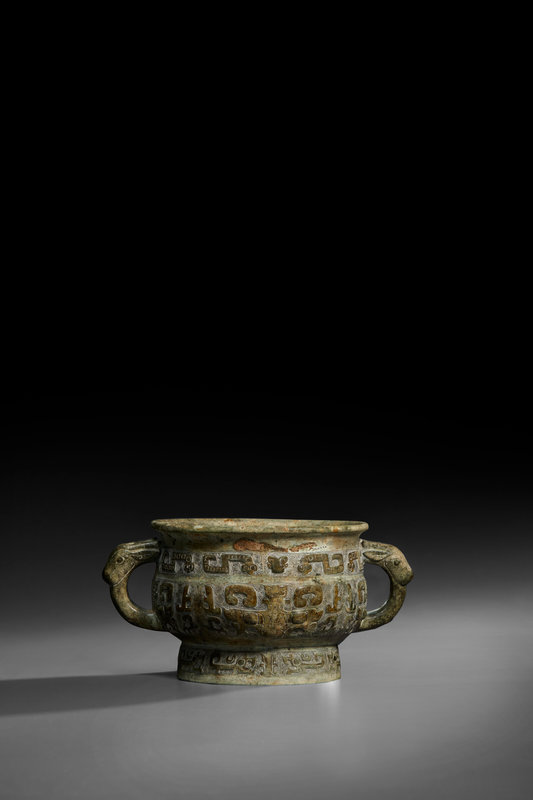
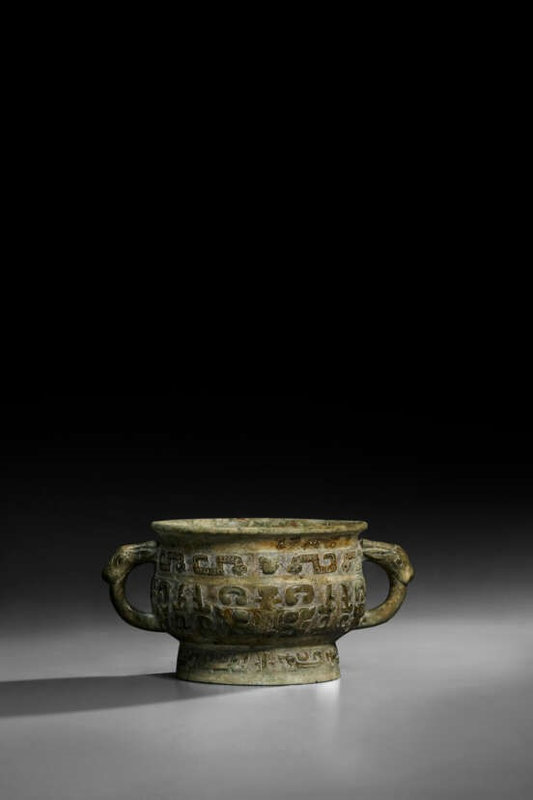

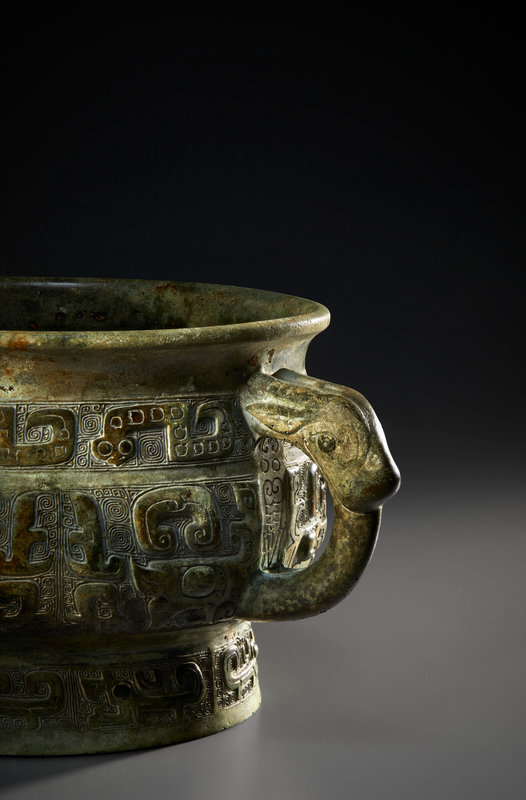
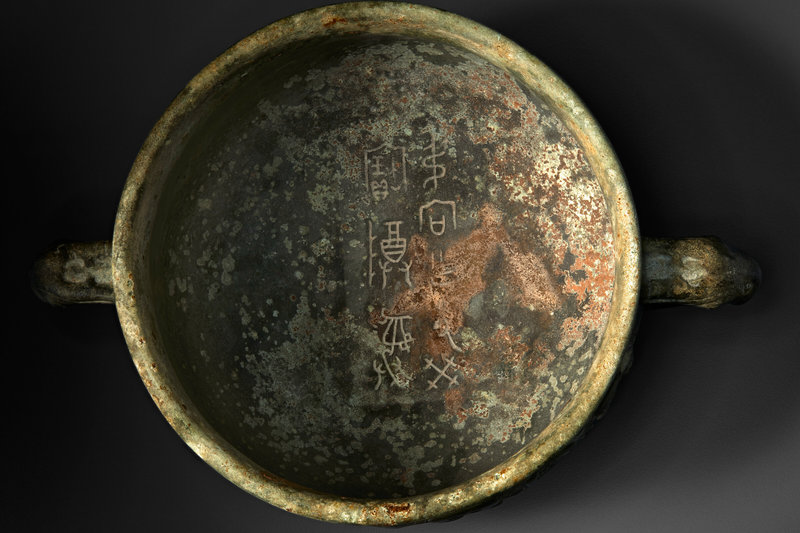

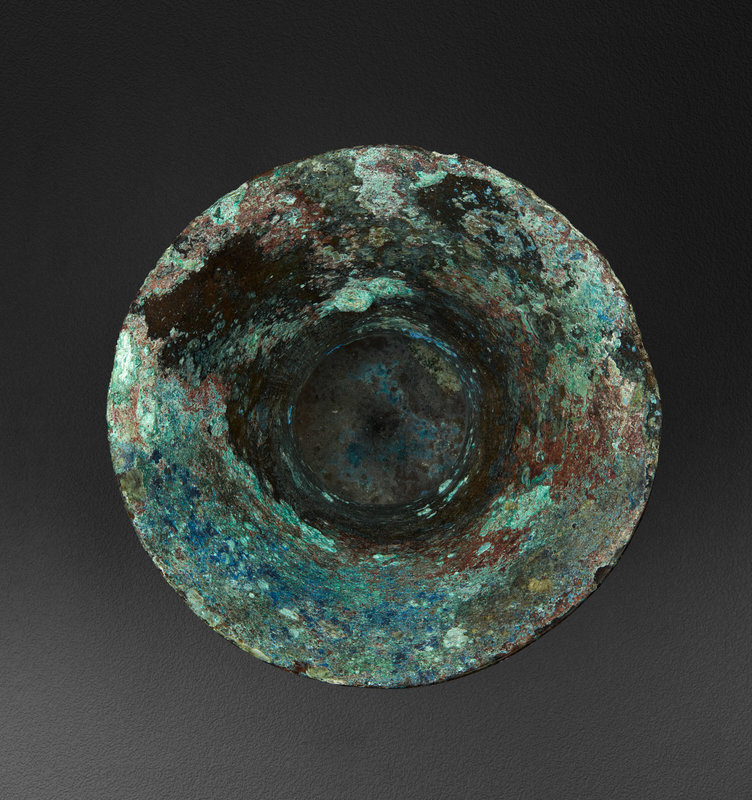

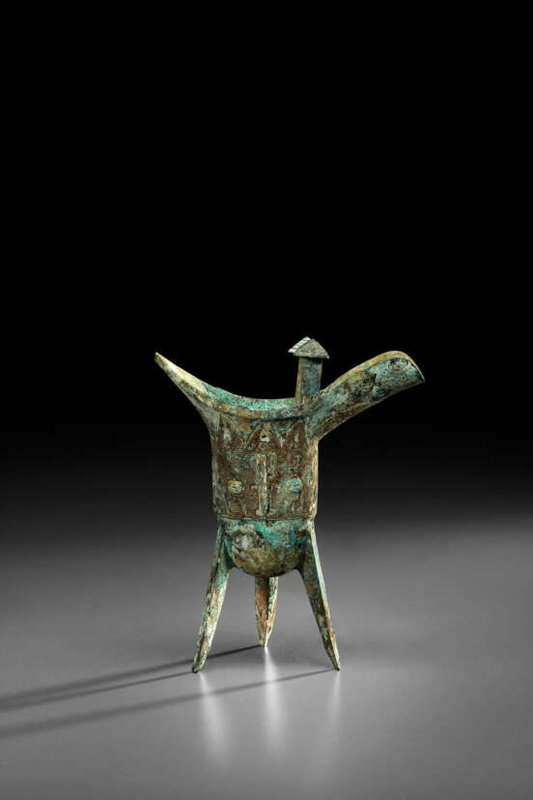

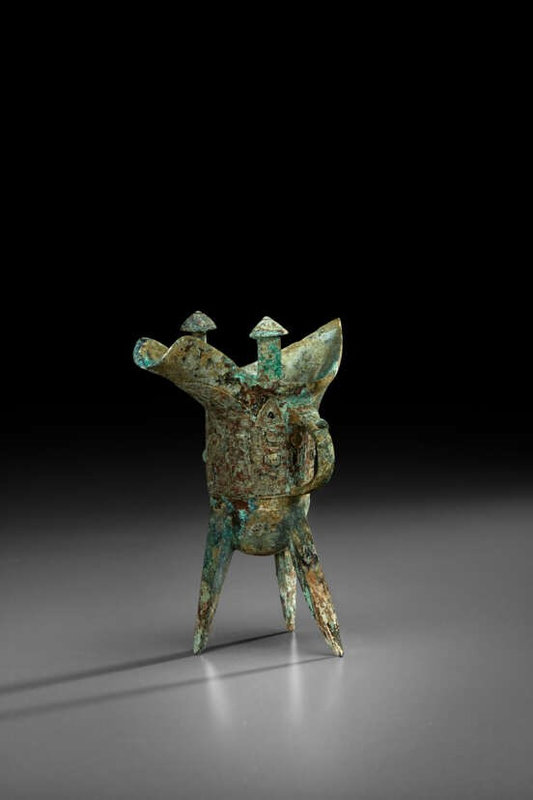
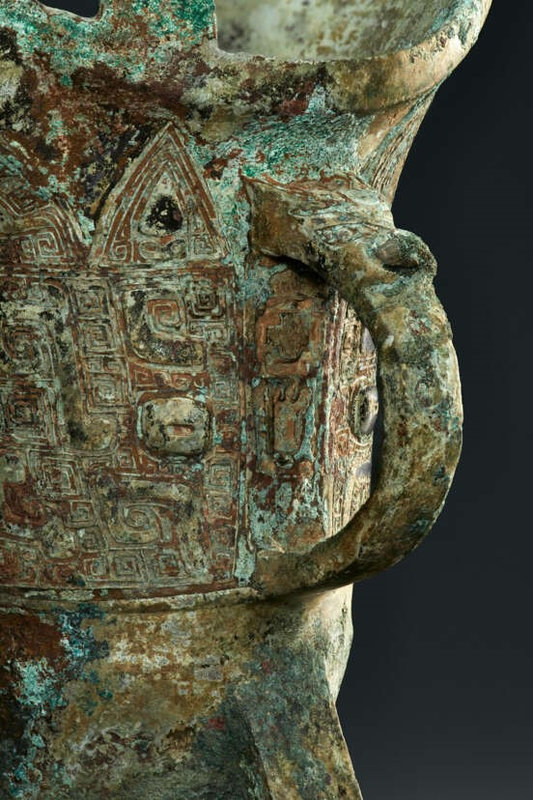
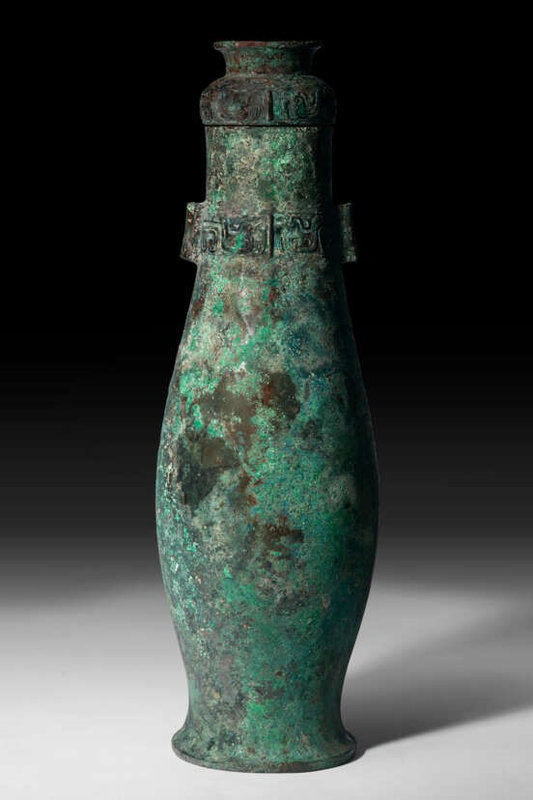

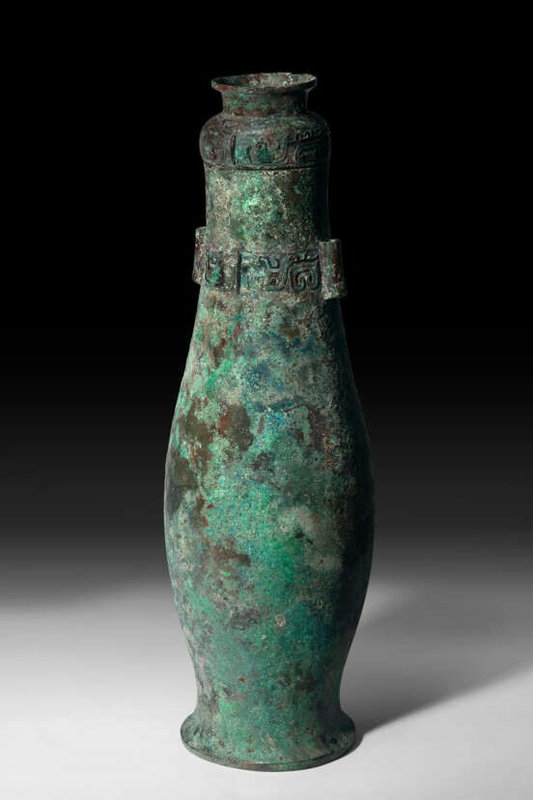
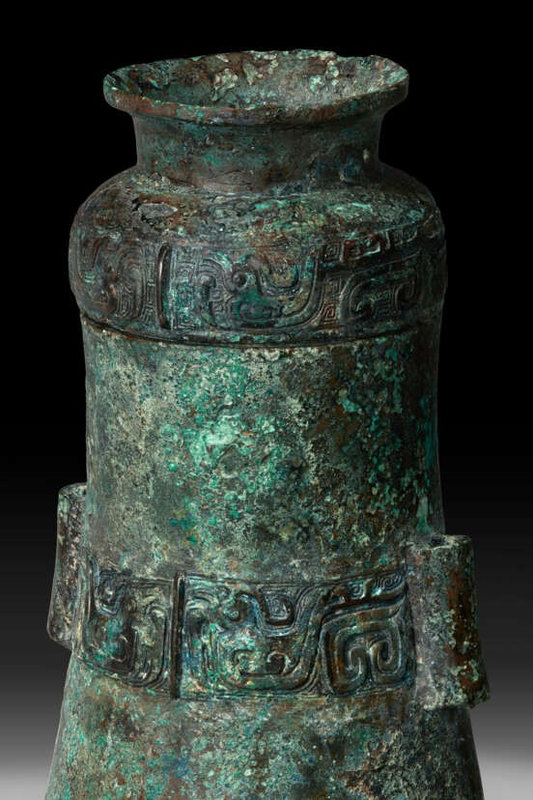
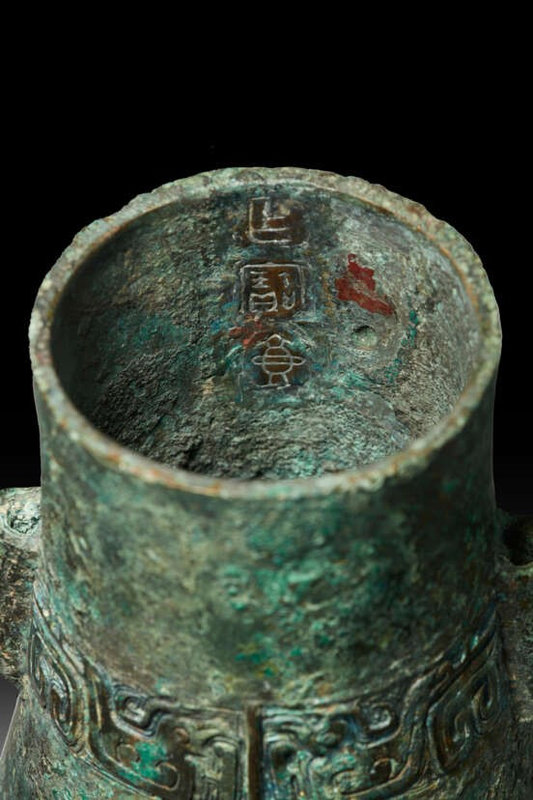

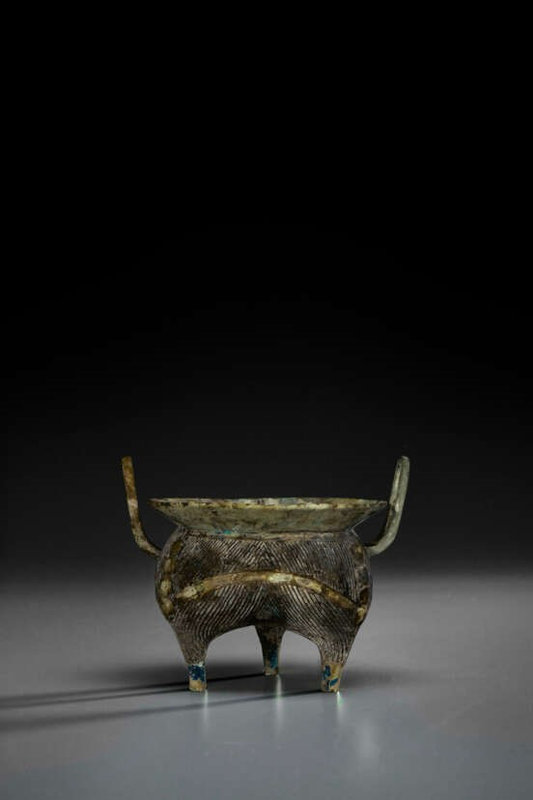




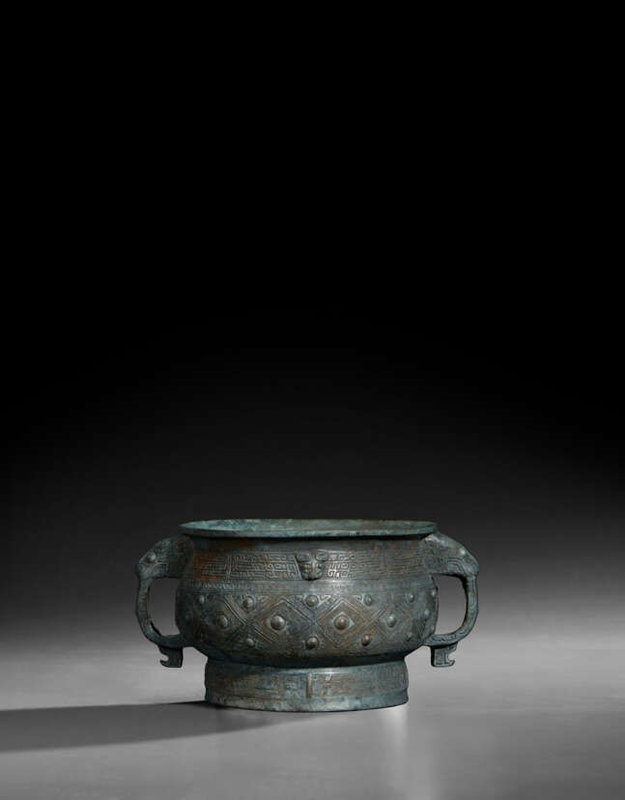
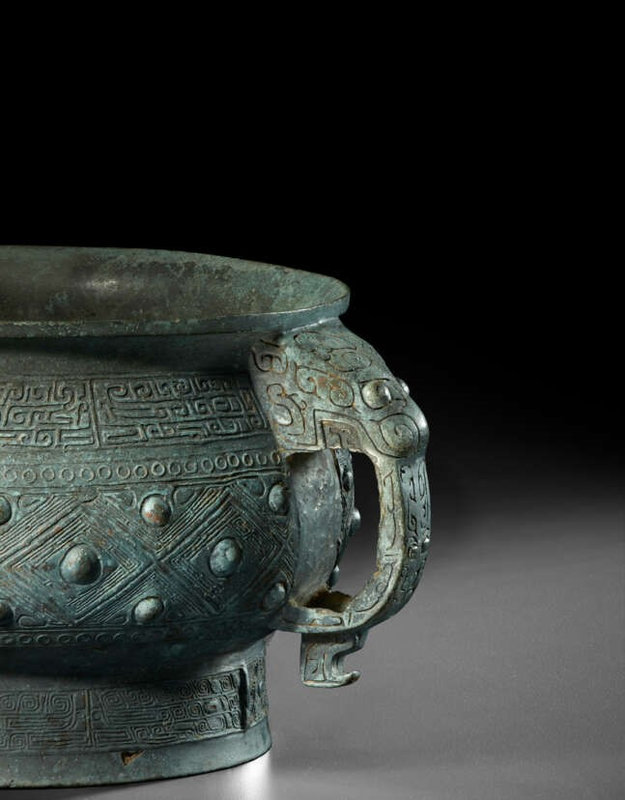




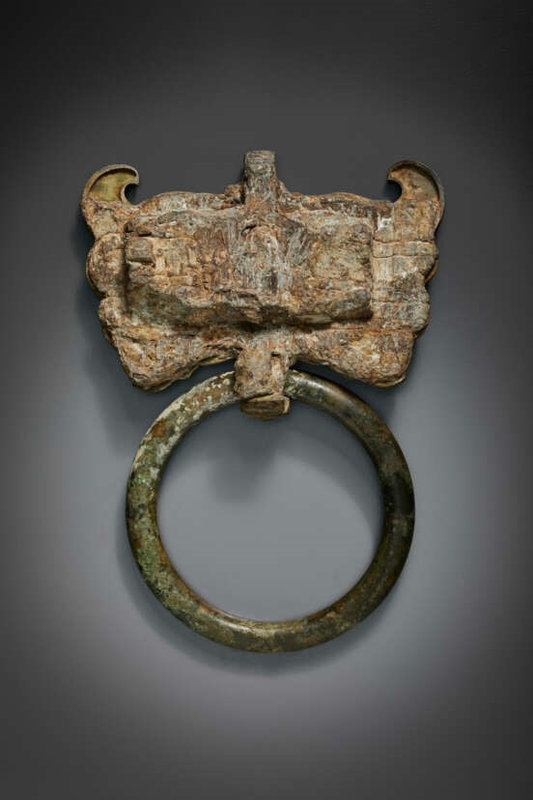
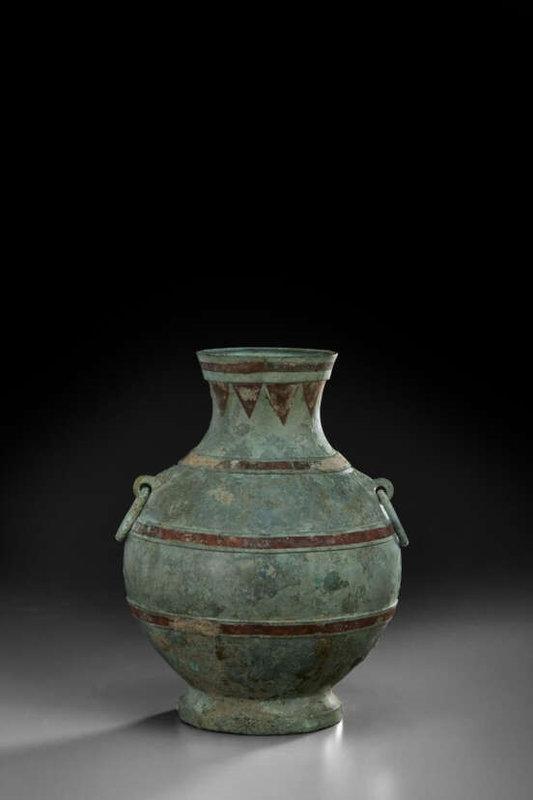
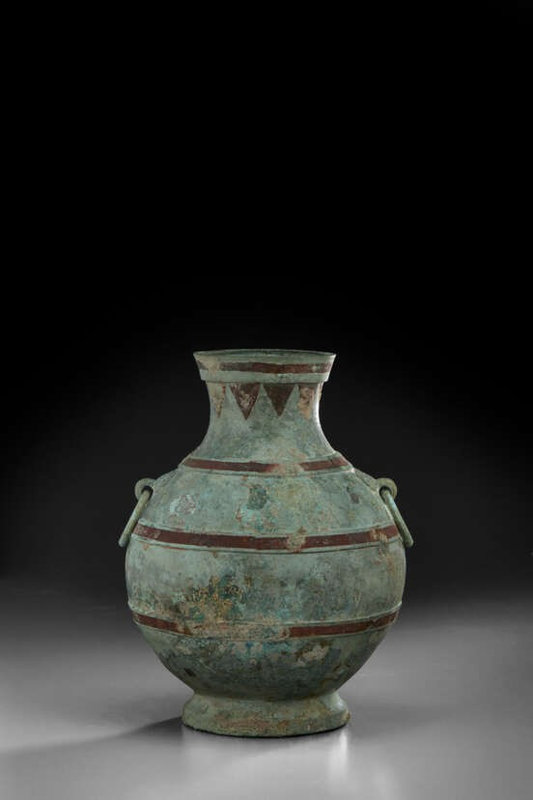
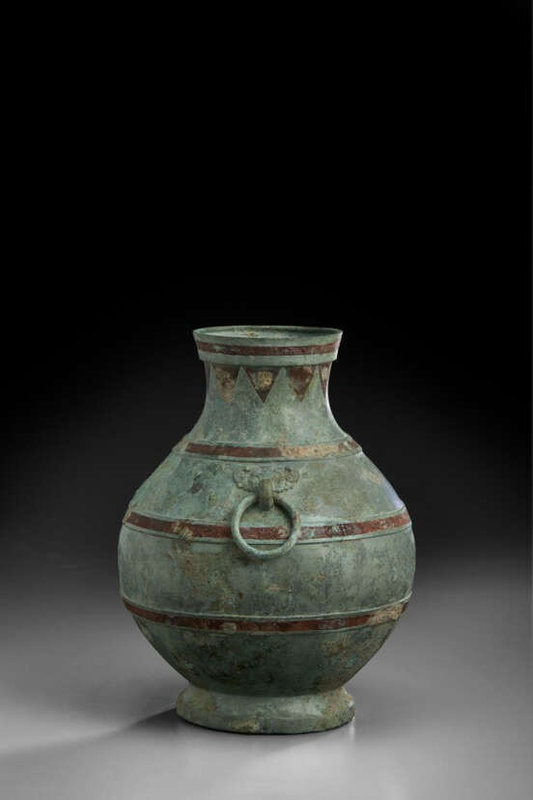
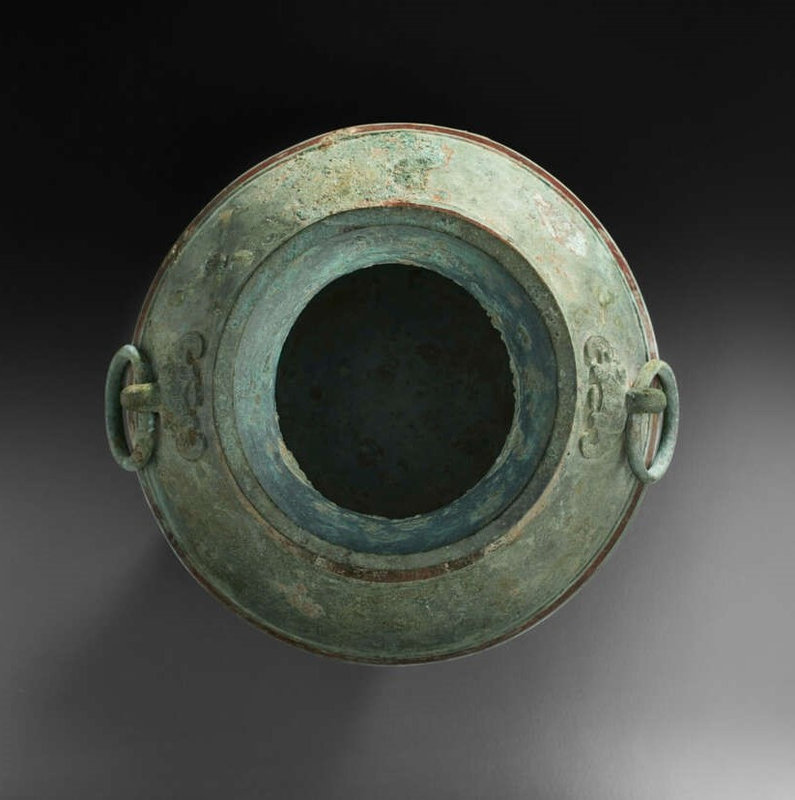



/image%2F1371349%2F20240406%2Fob_b23648_434058570-1644317966338216-88086167391.jpg)
/image%2F1371349%2F20240403%2Fob_6d5ae7_dp-28103-001.jpg)
/image%2F1371349%2F20240229%2Fob_8f31f9_431013694-1625286614908018-33034430839.jpg)
/http%3A%2F%2Fstorage.canalblog.com%2F79%2F20%2F119589%2F129837997_o.jpg)